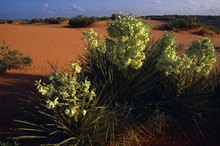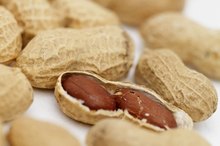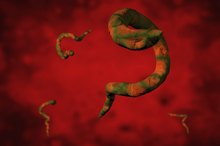Physical Adaptations of the Ground Squirrel
Animal adaptations are physiological and behavioral adaptations that help animals survive and thrive in their native habitats. When animals live in a habitat for a long time, they eventually develop physical features and mannerisms that help them function better in that environment. The ground squirrel has developed a number of physical adaptations to enable it to survive in its habitat.
Color
Most ground squirrels have a grayish coloring with black or brown accents. Some of them are golden with reddish highlights, depending on the type of background in their native habitat. For instance, the golden mantled ground squirrel’s habitat is forest-edged meadows, sagebrush areas and hardwood forests. This species of ground squirrel has grayish-brown fur, with a lighter underbelly. This coloring enables it to blend more into the surrounding forest or sagebrush, making it less visible to potential predators. The golden mantled ground squirrel also turns a duller, grayer color in the winter. This also enables it to stand out less from the snow.
Claws
Yucca Flower Facts
Learn More
Ground squirrels live in underground burrows which they dig with their sharp claws. Ground squirrels use their claws to get a better grip as they climb trees to reach and gather seeds. The claws also serve as a defense mechanism to protect themselves and their young when they are threatened or attacked.
Feeding and Eyes
Ground squirrels have incisors that grow continuously. This particular physical adaptation helps protect their teeth from the wear and tear caused by their endless rooting and chewing of food. Ground squirrels also have internal cheek pouches which they use to store food and transport it to their burrows. Ground squirrels have large eyes located at the sides of their heads. The size and positioning of their eyes enable them to see at a wider angle to detect potential predators.
Posture and Vocal Communication
Glycemic Index of Lentils
Learn More
Ground squirrels assume a “picket pin posture” in which they stand on their two hind legs. The purpose of this adaptation is to enable them see over grasses to survey their surroundings. The posture also lets them hear better to detect sounds of danger. Ground squirrels make loud noises when they encounter danger to alert nearby squirrels.
Shape
Ground squirrels have a streamlined shape that helps them move swiftly through their burrows. This adaptation also enables them to evade predators by moving quickly if under attack. They have short fur, small ears, short legs and an elongated body, all of which help reduce drag as they run.
Related Articles
References
- Cornell University: Squirrels of Alaska -- Ground Squirrels
- Blue Planet Biomes: Arctic Ground Squirrel
- "Journal of Applied Physiology"; Adaptation to Cold in Golden Hamster and Ground Squirrel Measured Chiefly by Rates of Body Cooling; E.F. Adolph and J. Richmond; 1956
- Hussain Class: Golden Mantled Ground Squirrel
- All About Squirrels: About Ground Squirrels
- Arizona-Sonora Desert Museum: Ground Squirrels
Resources









